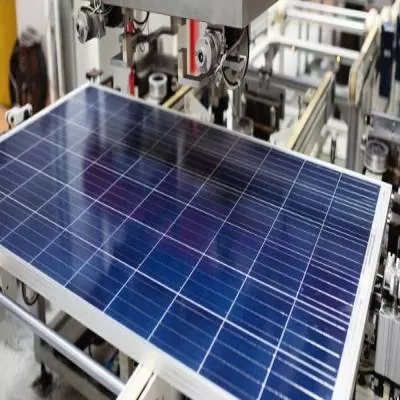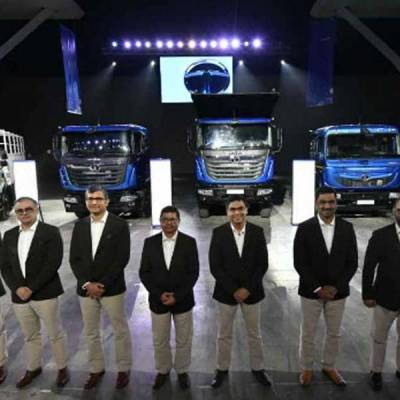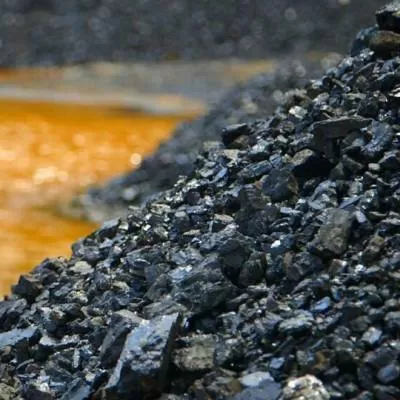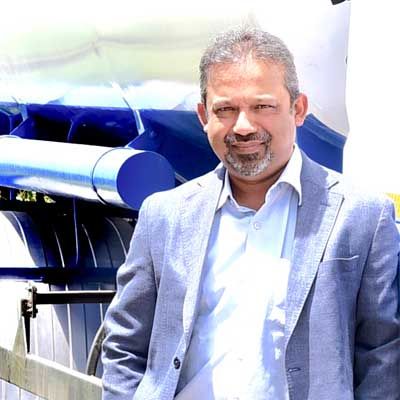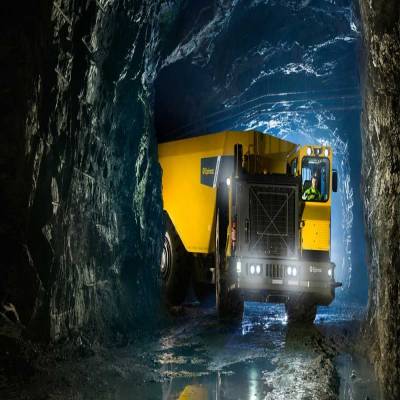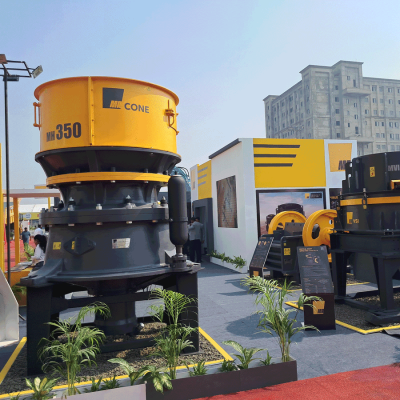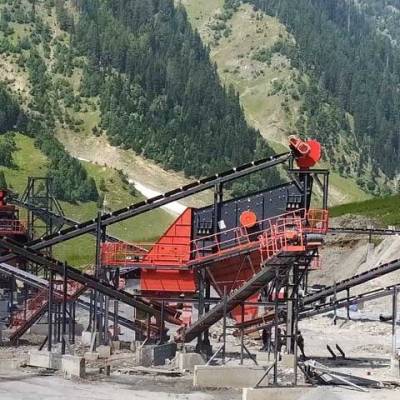- Home
- Infrastructure Energy
- COAL & MINING
- Shifting Preferences
Shifting Preferences
Read full article
CW Gold Benefits
- Weekly Industry Updates
- Industry Feature Stories
- Premium Newsletter Access
- Building Material Prices (weekly) + trends/analysis
- Best Stories from our sister publications - Indian Cement Review, Equipment India, Infrastructure Today
- Sector focused Research Reports
- Sector Wise Updates (infrastructure, cement, equipment & construction) + trend analysis
- Exclusive text & video interviews
- Digital Delivery
- Financial Data for publically listed companies + Analysis
- Preconceptual Projects in the pipeline PAN India
CW identifies productivity and safety features attracting users of tippers and dump trucks, and the technologies being deployed to track the performance of these mobile assets.Off-highway mining tippers of 20-40 tonne capacity and rigid dump trucks of 35-500 tonne capacity are a specialty segment. And this segment has been adversely impacted by the slump in the economy, according to Ranjit Ravindran, Business Head, Mining, Voltas, making the market quite sluggish with many restrictions in achieving financial closures. He expects the slowdown to continue for another three to four months.Between April and July 2019, demand for medium and heavy commercial tippers (of capacity 16 tonne GVW and above) dropped 29 per cent to 18,100 units as against the same period last year owing to the general slowdown in the global economy and liquidity-tightening measures adopted by the government, says Rajesh Kaul, Vice President and Product Line Head-MHCV, Tata Motors. He expects demand to start picking up after the monsoon, with road construction, RMC, coal and mining contributing to growth.“Demand for dump trucks of capacity up to 100 tonne is steady but the larger sized trucks aren’t seeing much growth,” opines Ashim Kumar Mukherjee, Technical Advisor, Belaz-Enrika Mining Equipment Services. “Typically, the demand for dump trucks is from the mining, power, steel and cement sectors, but on a replacement basis only; new trucks are inducted to maintain fleet strengths. Until new projects come up like new coal blocks or iron ore mines, so that further induction becomes necessary to support additional production, the market will not grow significantly.”Mukherjee believes tippers are supporting the higher production of coal through outsourced agencies deployed in coal mines to augment overburden removal and coal production. Also, these are used to transport materials in road projects and in the construction sector and infrastructure development, which is why that segment is growing.Preferred productsIn the mining tippers segment, mostly applied to remove overburden and extracting ores and materials in stone quarries and iron ore and coal mines, demand has shifted from the 4 x 2 configuration to the 6 x 4 category and, in some cases, to 8 x 4 configurations, says Kaul. “For surface movement applications, the shift is to 8 x 4, 8 x 2, 10 x 2 and tip trailers (up to 55 tonne GCW). Customers engaged in construction and surface transport are looking at higher capacity tippers.”Recently, Tata Motors launched all new high-performance, fuel-efficient 6 x 4 tippers with Prima and Signa cabins for surface movement. Nowadays, buyers prefer mining tippers with 30-40 tonne pay load capacity and dump trucks of 50 tonne, 60 tonne and 100 tonne capacity, says Ravindran.“We select dump trucks on the basis of the quantum of material to be handled per month and the total material to be handled during the contract/project period,” says Suman Nair, Vice President-Plant & Equipments, BGR Mining & Infra. That said, Nair points out that “private players engaged in subcontracts find it more cost-efficient to use 50-tonne dump trucks. Mining majors such as Coal India can use 100-tonne plus trucks.”Large-scale operations warrant high-capacity dumpers. “At Reliance Sasan Coal Mines, India’s largest pit coal mine, we need 240-tonne dumpers to meet our annual target,” says Sanjay Kumar, General Manager, HEMM, Reliance Sasan Coal Mines. “There is a limit to how many dumpers you can operate in a mine without causing congestion and compromising safety. For the sake of safe mine operations, we opt for high-capacity machines.”“Based on the type of material to be handled, we check that the gross weight of the dump truck falls within the permissible capacity,” adds Nair. “In choosing a bucket for the excavator, we prefer that five to six passes of the bucket should fill the dump truck. For loose material like coal, gravel, etc, we prefer box-type body tippers. For other materials like moderately blasted materials, semi-blasted rock, boulders, etc, we prefer a scoop-type body.”“In tippers, we look for the highest possible mileage. Every other feature is secondary,” says Kumar.New vistasA technology taking the tipper and dump truck segment by storm is “hybrid machines with 100 per cent electric drives, which save fuel and curb pollution”, shares Ravindran. “Driverless technology, including automation, is catching on in the earthmoving machinery segment.”“There is a need for electromechanical drive dumpers and tippers powered also by electric prime movers like battery with alternator having a regenerative braking system coupled with user-friendly, self-diagnostic and prognostic features,” adds Mukherjee.“A new segment opening up is the import of second-hand dump trucks, either through outright purchase from different agencies or bought at overseas auctions. These are then refurbished and reconditioned in India,” says Mukherjee. “Thriveni Earthmovers recently bought a lot of second-hand, heavy earthmoving machines, including off-highway dump trucks up to 240 tonne capacity through such a process, thereby minimising its investment and enabling customised rebuilding, resulting in high techno-economic benefits. Such brought, refurbished and used dump trucks include some OJSC BELAZ 240-tonne diesel-electric dump trucks.”Feature wiseOnsite safety is gaining importance in the mining and construction industry, opines Ruchi Ahluwalia, Director, HR, Marketing & Communications, Scania CV India. “Mine operators are increasingly realising that safe solutions are the key to long-term success.”Scania Commercial Vehicles India is focusing on its Next Truck Generation heavy tipper for the mining industry, a range with a unique modular system and profitability, productivity, safety and efficiency-enhancing features. The Next Truck Generation is BSVI compatible, integrated with an upgraded power train, resulting in higher load-carrying capacity, fuel efficiency and uptime. It offers 18 per cent higher payload with a 23-cu-m rock body, up to 5 per cent higher uptime, stronger aggregates for a longer life and a Swedish crash test-certified cabin for enhanced safety. “In general, customers look for better operating efficiency in terms of payloads, capacity, mileage and enhanced driving comfort,” says Kaul. “Customers also look for safety features and easy serviceability and lower maintenance. Mining customers additionally look for rugged heavy-duty vehicles with good manoeuvrability and gradeability, which are strong, sturdy and reliable in design.” Some notable features in Tata Motors’ tippers and trucks are the e-viscous fan and FE switch for higher fuel-efficiency, electronic stability control in select variants of Prima and Signa trucks for vehicle stability, and reduced risk of accidents, lower repair cost and improved vehicle uptime. Advanced safety features such as automatic traction control and hill start aid help prevent accidents. Selective catalytic reduction technology tackles emissions to meet BSIV norms in tippers of 180 hp and above, and improves engine life and performance. Engine brakes in select tippers improve safety as well as performance in downhill operations.For driver comfort, Tata Motors has introduced the Prima Lx cabin in its 2530 range of tippers. The Prima Lx 3130.K HRT 19-cu-m Scoop offers an ergonomic and comfortable Prima cabin, hub reduction axle and bigger load body.Ahluwalia expects to see more tailored products in the near term, products that are energy-efficient, more powerful, lighter, connected, durable and safer, assuring higher profitability and lower costs and operating risks.Telematics successWith the advent of Internet of Things (IoT), customers are becoming more aware of the value in transforming real-time operational and logistical data into actionable information impacting operations and productivity, observes Ahluwalia. To this end, connected vehicles and service solutions are being developed specifically to equip customers with real-time logistical data from across their fleet and operations to take decisions based on facts. “The movement and utilisation of capital-intensive transport equipment necessitates remote monitoring on a 24 x 7 basis,” explains Mukherjee. “For this, the dumper or tipper should have telematics-enabled monitoring facilities. Tippers are typically GPS monitored. Dumpers are also GPS monitored but as mining dump trucks operate within a closed mining boundary, repeater station-based telematics are also used to monitor dump trucks.”Telematics technology yields real-time data on all the operating parameters of the machines to a person sitting at a remote location or, say, in a back office, explains Ravindran. The data can include the number of trips made, fuel consumed per shift, traffic in the mines, on-board diagnostics, etc. “The Online Integrated Truck Despatch system is being used by all big miners in India, including Coal India, Vedanta, Reliance and Tata Steel. This helps them monitor and optimise production in a hassle-free manner,” he says.Tata Motors has over 100,000 vehicles plying on Indian roads enjoying the benefits of its fleet telematics solution, Tata Fleetman. This solution facilitates real-time monitoring, geo-fencing, trip review, alert reporting and trip management. It also monitors any unauthorised vehicle movement and pinpoints the exact location of the vehicles.Deepak Kumar, a Tata Motors customer, was able to retrieve his consignment of copper wires worth crores from a local gang who had stolen his 4018 trailer. The local police used GPS mapping by Tata Fleetman services. In fact, KM Trans Logistics has institutionalised the safety debriefing of drivers based on driving incidences recorded and transmitted through Tata Fleetman, and thereby improved its overall safety record.“With the help of Tata Fleetman, Tata Motors has established a proactive maintenance intervention process based on the real-time fault code transmission,” says Kaul.Basic services“Telematics is useful from the service point of view but it cannot replace on-ground support, which we feel could be better,” says Kumar. “India needs more trained technicians with in-depth knowledge to support heavy vehicles working in mines.”According to Kaul, “Mine operators are, in particular, concerned about aftermarket services as vehicles plying in mines usually run for two shifts a day and are exposed to extreme conditions. Customers look for OEMs who can partner them in the long term and help them maintain their fleet.” Therefore, Tata Motors offers a variety of annual maintenance contracts and onsite support.To offer customers end-to-end onsite support, Scania India has adapted service plans; these include site optimisation, repairs and proactive maintenance, and uptime improvement. Onsite support is increasingly being synced with overall mining and construction operations for higher productivity and profitability, shares Ahluwalia.Also, Scania India has recently launched a central parts warehouse in Nagpur, a state-of-the-art warehouse spread across 30,000 sq ft, with over 8,500 stock-keeping units for its off-road, on-road and engine products. “Opening the warehouse closer to Scania India’s largest distribution partner, L&T, was a strategic move,” shares Ahluwalia. “It is expected to improve operational efficiency and reduce order processing time for customers across India, resulting in better turnaround time and availability of spare parts. It will help customers come closer to achieving total operational efficiency.”Indeed, every initiative to enhance productivity is good news!


